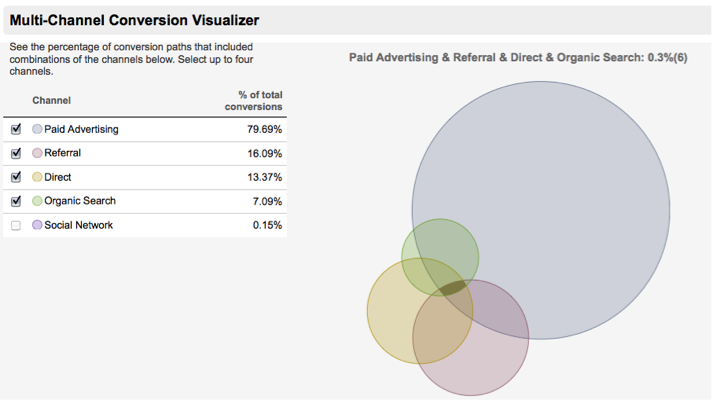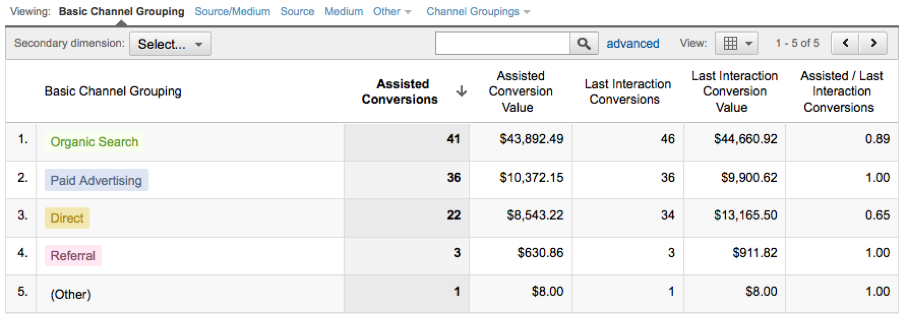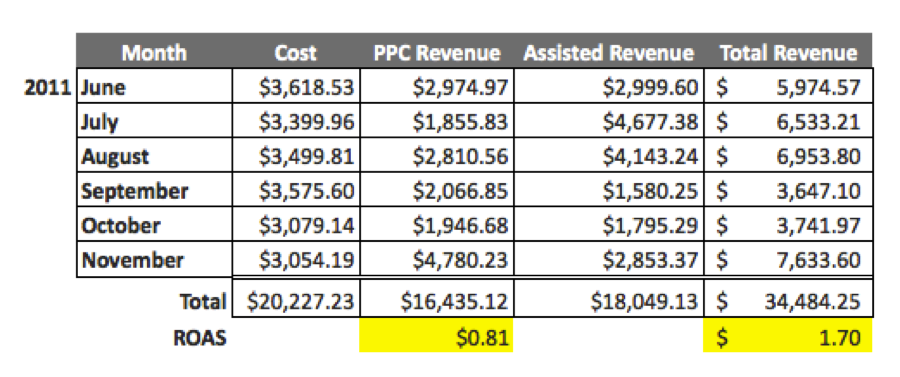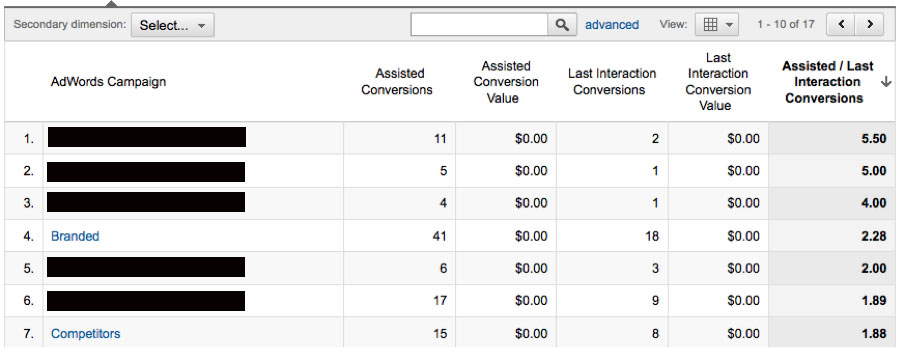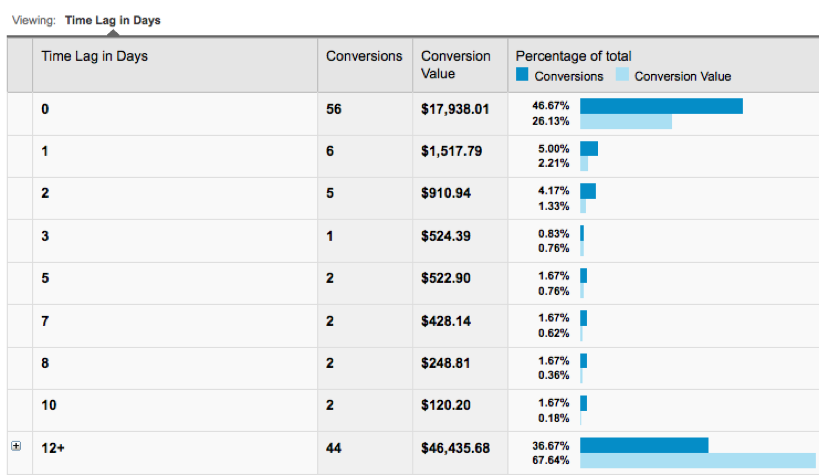5 Questions You Need To Answer About Your PPC Account Using MCF
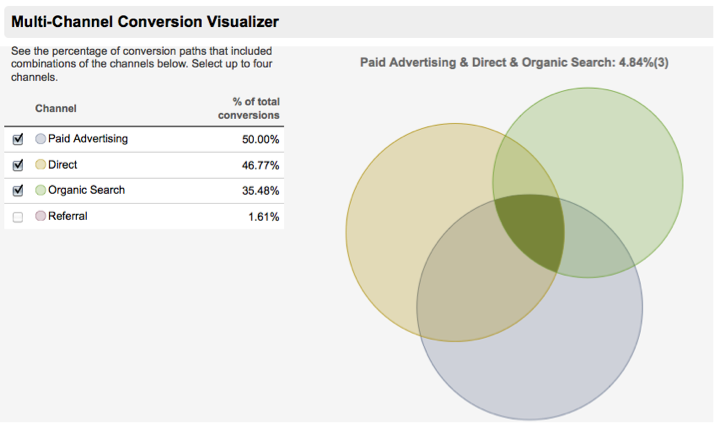
Multi-channel funnels give PPC managers the opportunity to better understand the role PPC plays in the conversion process. If you haven’t started looking into multi-channel reports for your account, it’s time to start. Below are 5 questions you need to answer to better understand your pay per click advertising.
1. How much does PPC interact with other marketing channels?
Why it’s important to know: If there is a lot of interaction between different marketing channels in a conversion, just reporting AdWords conversions is not enough. You will be missing a large part of the picture and won’t be able to accurately assess PPC performance if you don’t know how it interacts with other mediums.
Navigate to the Overview report and scroll down to see the Conversion Visualizer. There are many things that can affect the amount of interaction in a conversion, like buying cycle or separate PPC landing pages. The examples below show the difference in interaction between a high-cost product without separate PPC landing pages, and a low commitment conversion with separate landing pages.
High cost conversion, without separate PPC landing pages:
Low commitment conversion, with separate PPC landing pages:
Channel interaction is incredibly important to understand for any PPC account. Knowing how these channels work together to create a conversion will help you better evaluate and optimize your PPC account and more accurately report performance to clients.
2. How much does PPC assist with conversions?
Why it’s important to know: You might not be reporting the full benefit of running PPC ads. Previously in Analytics, we could only attribute conversions to PPC if PPC was the last interaction. This meant that PPC ads, which are often the first interaction someone has with your brand, were not being given full credit for attributing to conversions.
You need to be reporting Assisted conversions as well as last interaction conversions to your client. In the example below, you can see that with just last interaction revenue, we were missing more than half of total revenue in which PPC was part of the conversion path.
Let’s take a look at how assisted revenue can change the whole picture of PPC from one of our monthly reports below:
Before MCF, we could only report revenue that came from a last click PPC conversion. Based on this data alone, the account was losing money. For every dollar of ad spend, only $0.81 of revenue was being generated. Taking assisted PPC revenue into account, which accounted for more than half of the revenue generated in the last 6 months, ROAS increased to $1.70.
3. Which PPC campaigns / ad groups / keywords / placements have more assisted conversions than last click conversions?
Why it’s important to know: You could be cutting back on budgets or pausing campaigns, ad groups, keywords, or placements which appear to be “poor performing” in AdWords but are actually generating conversions and revenue.
Go to the Assisted Conversions report and toggle to the AdWords tab. Sort your data by Assisted/Last Interaction Conversions to view the campaigns you are most likely undervaluing.
Compare this information to your current spend / bids in your accounts. Increase budgets on campaigns that drive assisted conversions to see if you can generate more return. Bid up on keywords and placements that might not be the conversion closer, but are part of the process.
4. Are Branded Campaigns Taking Too Much Credit?
Why it’s important to know: You might unjustly consider some non-branded keywords, ad groups, or campaigns as under performing, when really, they’re contributing to the initial search that leads to a brand term conversion.
If you’re bidding on your branded terms, you might notice that they do spectacular in AdWords. It’s important to realize, however, that those conversions are often a part of a previous organic or paid click, then when the searcher is ready to convert, they search on your branded terms, thus, clicking a paid, branded ad.
Branded campaigns taking credit for the final click on searches that originally came in through another campaign or involved a click on a remarketing ad after the initial visit are pretty common. It’s good to know what areas are contributing so that you can see the true value of campaigns that may see a low conversion rate or high CPL.
To look at conversion paths which have Branded as the last interaction, go to the Top Conversion Paths report and make sure you are on AdWords. Then, create a new conversion segment to show only conversion paths which have Branded as the last interaction.
Once you save and apply the segment, sort by conversions and you’ll see all of the AdWords conversions that are being attributed to the Branded campaign. Below is a snapshot of 4 conversion paths where other campaigns initiated a conversion, but Branded was taking credit.
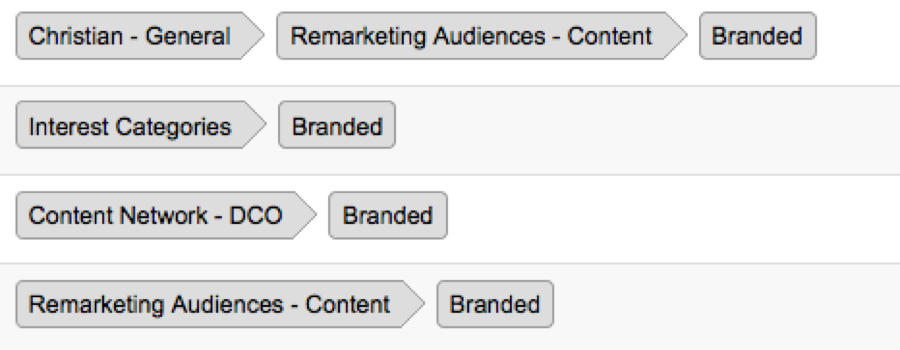 I can see that although my Display Network campaigns typically have a much higher CPL than branded, they are playing the important role of conversion initiator. Knowing this information is important so you don’t pause or limit campaigns that help spread brand awareness and lead to conversions for your account.
I can see that although my Display Network campaigns typically have a much higher CPL than branded, they are playing the important role of conversion initiator. Knowing this information is important so you don’t pause or limit campaigns that help spread brand awareness and lead to conversions for your account.
5. How long does it take for a person to convert?
Why it’s important to know: Money you spend in one month may continue to generate conversions in the following months. If your conversion requires people to spend money, it’s likely your conversion path will be longer than a day.
Looking at the example below of an e-commerce client, about half of the conversions occurred in the first day, but more than 30% took 12 days or longer. Also, these longer time lag conversions were much more valuable, account for about 68% of total revenue.
Don’t look back at November’s spend and conversion totals on December 1st and evaluate performance. If you have a time lag of more than just a few days per conversion, the money you spent on PPC will still be generating conversions or revenue for you in months to come. Looking at it the other way, a large sale last month might have come from a PPC ad clicked the month before.
Keep this in mind when running reports that cost to conversions in a month is not a one-to-one comparison. Money that you or your client has spent this month, may not show return until next.
Every PPC manager should know the answers to these 5 questions to better understand and improve PPC performance. To learn more about using MCF, check out our full Guide to Google’s Multi-Channel Funnels!



